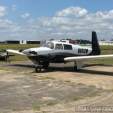New Member, Very Close to Buying C Model
-
Members Online
- JD.O2
- Paul Thomas
- Ragsf15e
- Gus
- McMooney
- MB65E
- Stealth Mooney
- BillC
- slowflyin
- Rocket_Driver
- dkkim73
- bryanjcp
- Cutlater
- LANCECASPER
- redbaron1982
- ap891
- Zippy_Bird
- Wingfree
- exM20K
- 201er
- mmcdaniel33
- Marc_B
- eman1200
- avanti
- Hank
- SKI
- N201MKTurbo
- hammdo
- C-Mu
- firelog1101
- 1967 427
- TCC
- dzeleski
- GMBrown
- Jeremyjford
- Shadrach
- richardbrochu27
- Aviationist
- Iceman7004
- Skates97
- Greg Ellis
- TheBearFlies
- mariosmt
- vorlon1
- cbogie
- Jake@BevanAviation


Recommended Posts
Join the conversation
You can post now and register later. If you have an account, sign in now to post with your account.